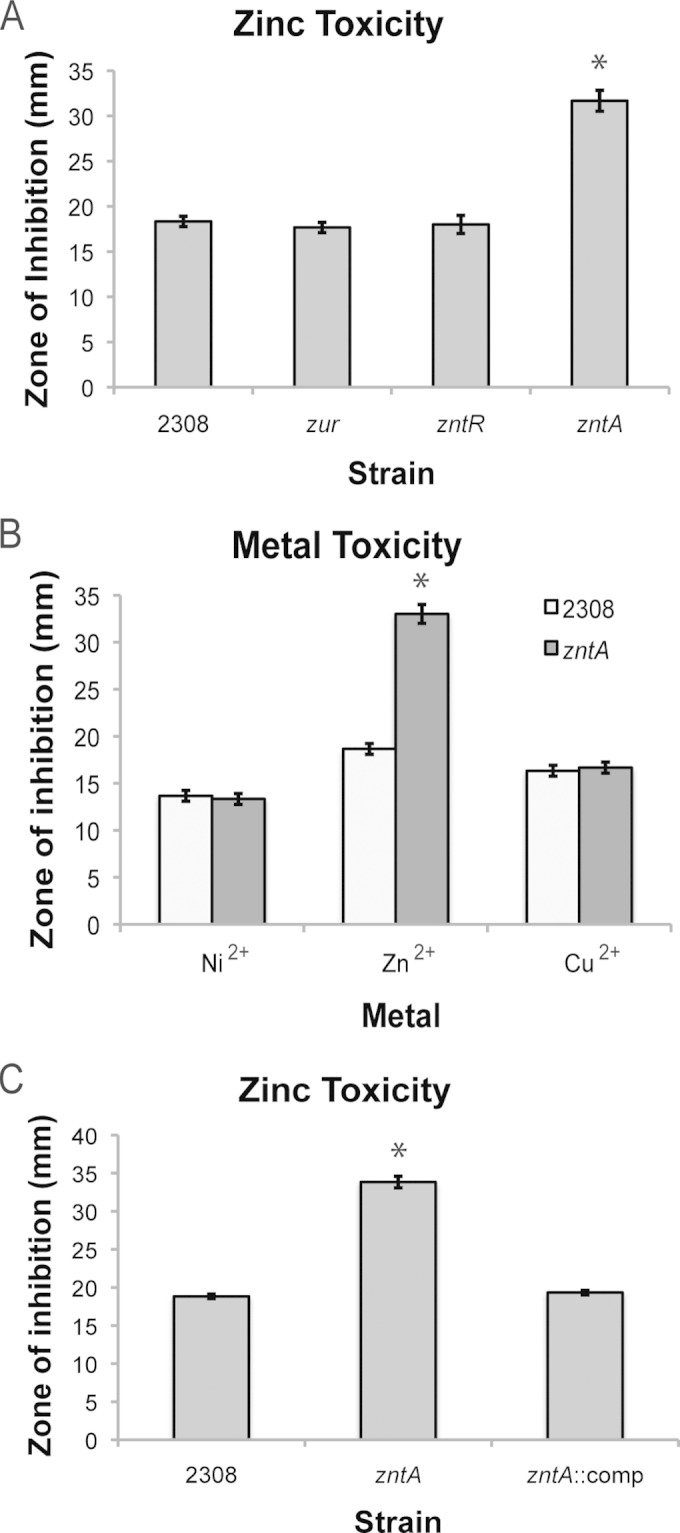FIG 5.

Mutation of zntA, encoding a high-affinity zinc exporter, results in elevated sensitivity to zinc toxicity. (A) Isogenic zur, zntR, and zntA mutants were constructed in Brucella abortus 2308, and these strains were tested in a disk diffusion assay for their comparative susceptibilities to toxic levels of zinc. The results are plotted as the average diameter (±standard deviation) of the zone of inhibition around a disk containing ZnCl2, and the results are from a representative experiment that was performed independently at least three times with triplicate samples for each individual experiment. Statistical significance between results for a given strain and those for the parental strain 2308 was determined by a t test (*, P < 0.05). (B) The zntA mutant is uniquely sensitive to zinc concentrations. A disk diffusion assay was performed to compare the susceptibilities of B. abortus 2308 and the zntA mutant strain to toxic levels of divalent cations, including Ni2+, Zn2+, and Cu2+. The results are shown as the average diameter (±standard deviation) of the zone of inhibition around a disk containing NiCl2, ZnCl2, or CuCl2, and the results are from a single representative experiment that was performed three times independently using triplicate samples for each experiment. Statistical significance between results for the zntA mutant strain and those for the parental strain 2308 was determined by a t test (*, P < 0.05). (C) Genetic complementation of zntA expression restores resistance to zinc toxicity. The wild-type zntA locus was reconstructed on the chromosome of the zntA mutant strain, and this complemented strain (zntA::comp) was assessed for its sensitivity to zinc toxicity using a disk diffusion assay. Data are from a representative experiment performed independently three times using triplicate samples for each experiment. Statistical significance between results for the zntA mutant strain and those for the parental strain 2308 was determined by a t test (*, P < 0.05).
